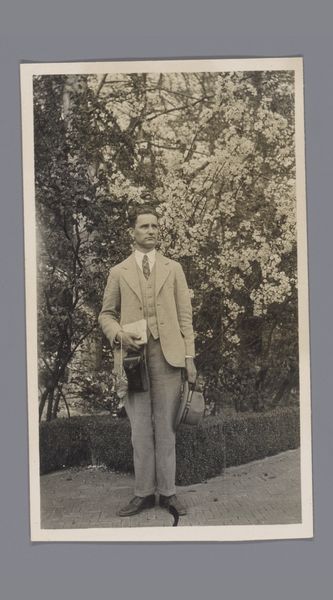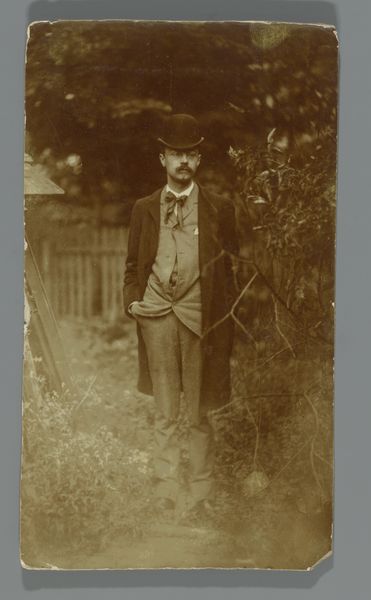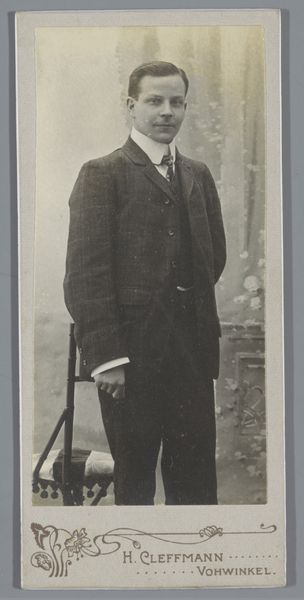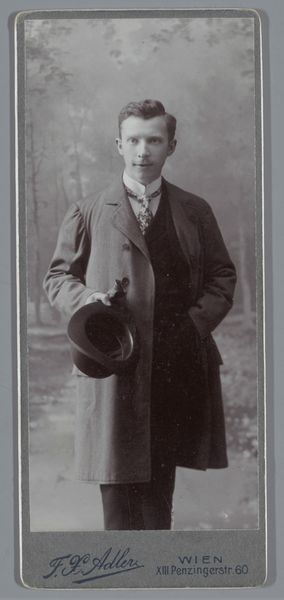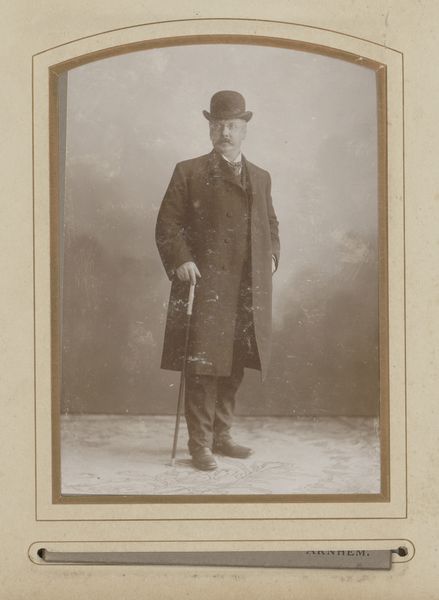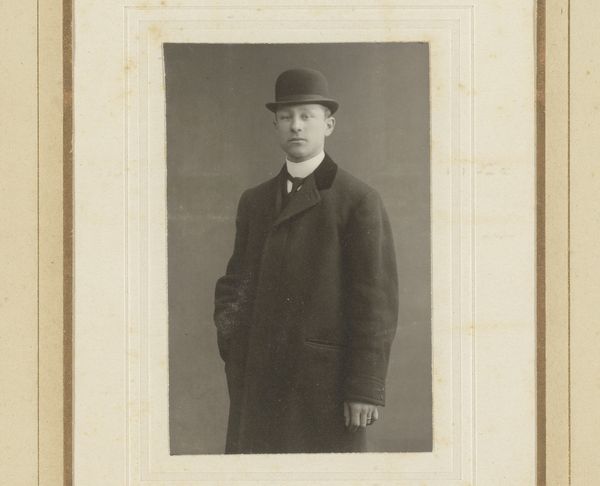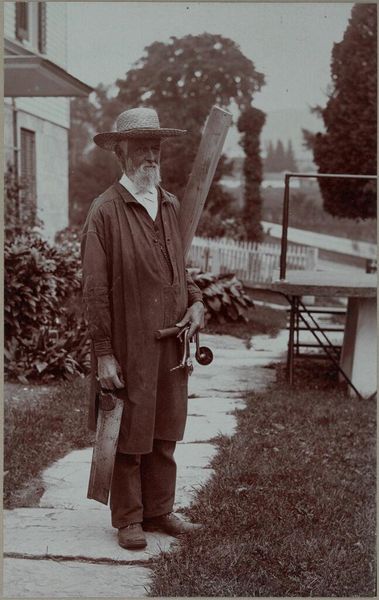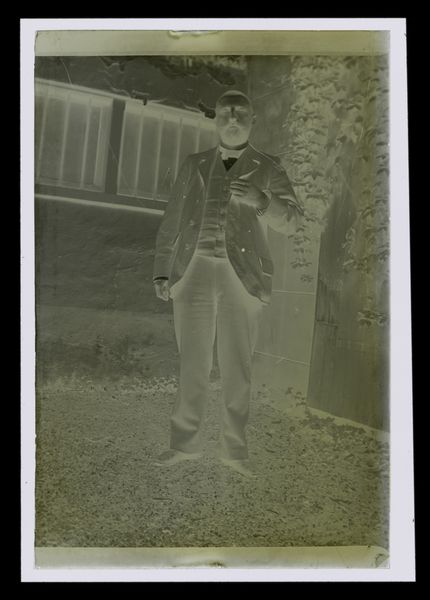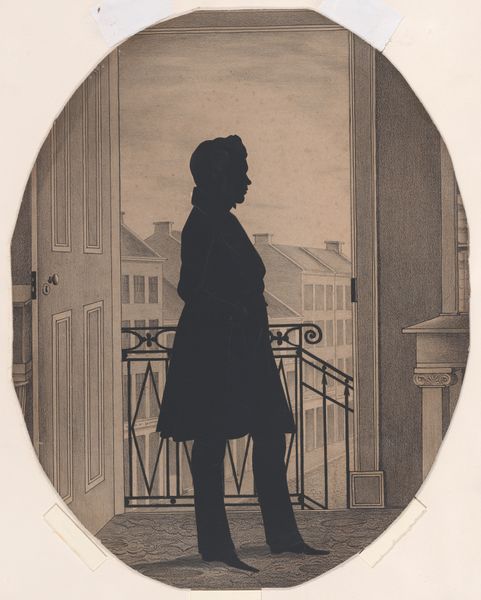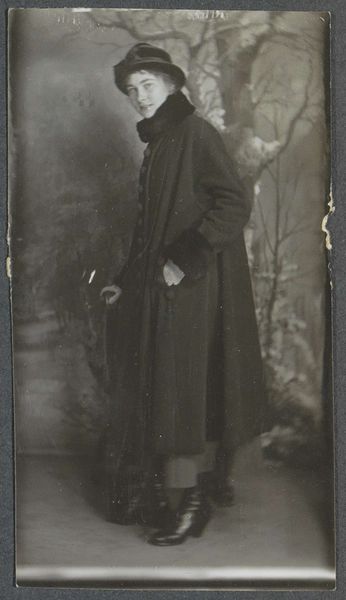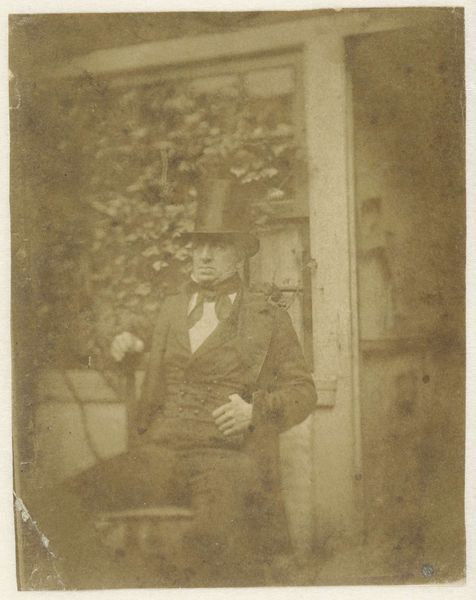
Constantin Mitrofanovitch Flórinsky, Officer of His Majesty Tzar Nicholas II (Jaeger Regiment) 1907
0:00
0:00
photography
#
portrait
#
outdoor photograph
#
photography
#
realism
Dimensions: 12.3 x 9.1 cm (4 13/16 x 3 9/16 in.)
Copyright: Public Domain
Curator: This is a photograph from 1907 titled "Constantin Mitrofanovitch Flórinsky, Officer of His Majesty Tzar Nicholas II (Jaeger Regiment)." It's currently part of the collection at the Metropolitan Museum of Art. Editor: It has such a solemn feel. He stands rigidly with a cane against this blurred autumnal backdrop, framed by formal garden elements. There’s something undeniably melancholic about it. Curator: And he *is* positioned formally. Notice the details that speak to his station and military role—the meticulously tailored greatcoat, his assured pose, the very deliberate way he holds the cane, a known marker of the elite. This photograph seems carefully constructed to project an image of power and order, deeply embedded in the Imperial system. Editor: The lighting and the color palette are evocative. While seemingly realistic, the photograph employs symbolism through color to signal the sitter’s significance. His attire and the surrounding railings almost blend tonally, unifying his sense of status within this historical context. Curator: I find that point interesting given what we know of the broader cultural trends at that time in Russia. While photography was gaining popularity as a tool for social documentation, it was also being used to reinforce established power structures. Portraits like these played a vital role in maintaining the Tsar's image and influence. Editor: It also hints at how an image may influence what power we assign to that sitter. How does Flórinsky want to be seen? Note the symbolism in the formal wear versus the casual elements in the backdrop, where autumn mirrors the ephemeral nature of worldly status, as everything shifts and falls from its initial placement in time. Curator: That interpretation, from an iconographic perspective, sheds an insightful light on the portrait. The image could suggest an awareness of impending change— perhaps the societal shifts bubbling beneath the surface of Tsarist Russia? Editor: Maybe. Perhaps in gazing at it, we project the present back on the past, finding hints of the inevitable fall. Curator: Whether Flórinsky fully realized those changes, he wanted to make sure this portrait presented a steadfastness through very calculated and material displays of visual imagery. Editor: And this portrait remains as an enduring cultural symbol of not only the subject, but a visual moment ripe with potential, now forever crystallized.
Comments
No comments
Be the first to comment and join the conversation on the ultimate creative platform.
